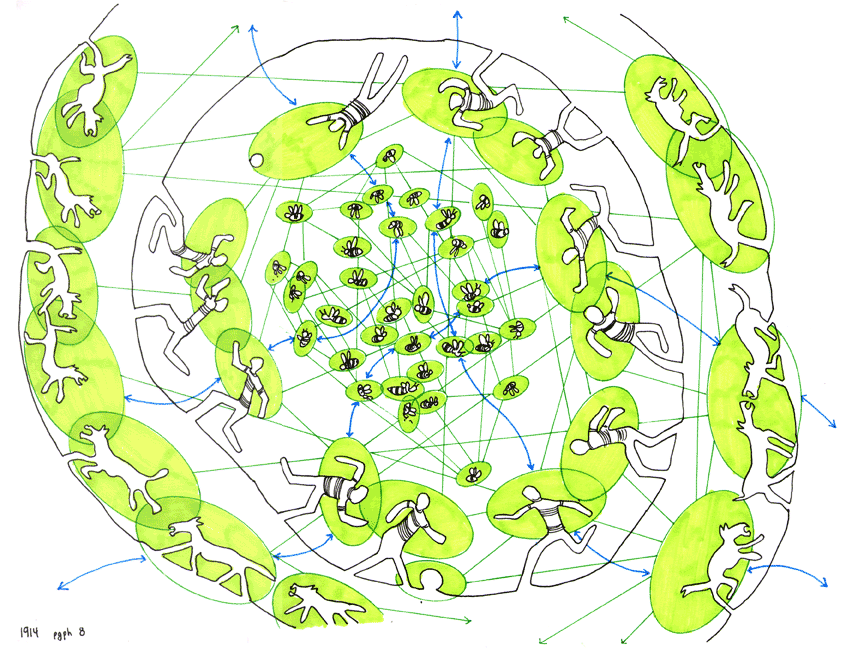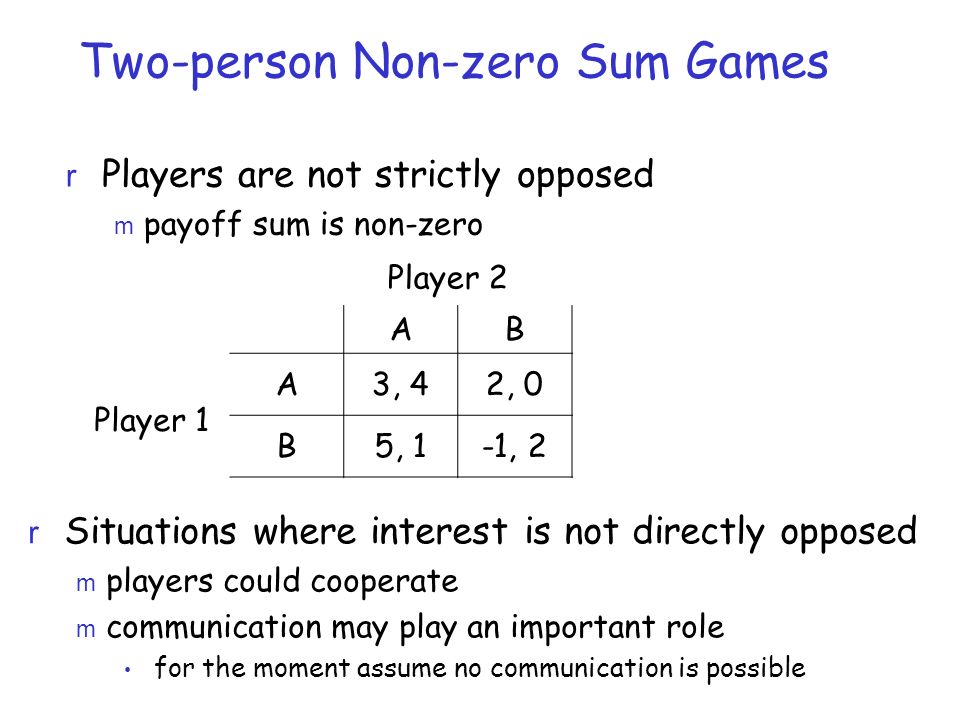This is a bit old news, but the concept of Hyper Structure was presented by Mr.Jacob, the founder of a project called Zora in the web3 industry. It was a hot topic, but even though I read them then, I couldn’t understand them.
For those who don't know the Fat Protocol theory or the blockchain mechanism, it is more complicated. I searched Google for "what is hyper structure" and found surprisingly few articles explaining it in an easy-to-understand manner, so I will try to explain it based on my knowledge and experience.
Prerequisite Knowledge
What is a protocol?
In conclusion, a protocol is a set of smart contracts.
It is often explained that "protocols are such as HTTP and TCP on the Web," but I think this explanation further complicates the understanding of protocols.
In other words, building a protocol means building a DApp that includes a group of smart contracts, and the implication is working to make the rules and procedures defined in the smart contract a global standard.
EVM and Smart Contracts
EVM (Ethereum Virtual Machine) is a concept that considers the Ethereum blockchain as one virtual machine for the entire world.
Normally, when you run a system, you have to prepare your server or rent a server from a cloud service such as AWS to host and run the code you wrote there.
On the other hand, in the case of blockchain, people all over the world who want to use it set up a machine called a node, which records and stores all transactions on the blockchain, and in the case of Ethereum, executes functions of smart contracts.
So it can be viewed as if the entire world is one virtual machine running the smart contracts requested by users, and we call it the Ethereum Virtual Machine.
What's great about this is that if one node dies, it will continue to run without problems. If it were hosted by any one person or company, the system would be unavailable at the time of an outage, but on Ethereum, it will continue to be available.
Main Question
I would now like to explain what I mean by the seven characteristics of hyperstructures, quoting from the original text.
-
Unstoppable
-
Free
-
Valuable
-
Expansive
-
Permissionless
-
Credibly neutral
-
Positive sum
Unstoppable
the protocol cannot be stopped by anyone. It runs for as long as the underlying blockchain exists.

The nuance of the word initially gave me an anti-authority vision, but throughout, Jacob seems to be focused on a feature that keeps it running without administrators or maintenance costs. This is not because it is hyperstructured, but rather a characteristic of blockchain and smart contracts themselves.
There is no further labor or capital required to sustain the Hyperstructure.
This means that engineers do not have to maintain the system, keep up with Java and Node.js version upgrades as they have in the past and that investors do not have to invest additional funds. However, to maintain the blockchain and smart contracts themselves, electricity is required to run autonomously erected nodes around the world, and people are needed to maintain and maintain the machines.
If the core team or platform built on top of the hyperstructure were to disappear, it would still run exactly as designed and be fully operational for decades.
For example, someone might build a new system that works by combining the functions of hyperstructure with their smart contracts. Even if it disappears, the hyperstructure itself will not stop.
However, if the standard of Etherum itself changes, or if Layer2 by zkp is incorporated in Etherum itself due to the high gas cost, it is doubtful that the protocols will still work properly 10 years from now.
Free
there is a 0% protocol wide fee and runs exactly at gas cost.

There is no cost to maintain and keep the protocol operational forever.
A 0% protocol fee means that they do not charge a fee for NFT trades like OpenSea (although Uniswap has started charging this since V3).
It is worth stating while the Hyperstructure runs exactly at cost, someone still has to pay the gas cost to operate it at that point in time.
As long as you are executing smart contract functions, you need to pay for gas, as Jacob also mentioned (but there is a mechanism called meta-transaction where the operators pay for gas).
Also, if you set the protocol fee to 0, you would think "Who would want to build a system that doesn't make money just for the sake of goodwill?". This will come up in the next Valuable, but it seems that the people building it are aiming for a form where they can hold the governor tokens of the protocol and sell them for a profit in the future.
I had thought that they would be soliciting crowdfunding from prospective users who want to use the hyperstructure and not issue governance tokens, but Jacob does not seem to think so.
Valuable
accrues value which is accessible and exitable by the owners.

I think this is the most difficult chapter to understand even if you read the original text or the Japanese translation. I do not fully understand it myself but would like to try to speak for it in my own way, although there is a risk of mistranslation or misunderstanding.
My interpretation
First of all, it seems to me that the logic of "free to use = no profit = no value from a business standpoint" is valid, but the token ownership system makes it valuable from a business standpoint.
The value is based on the right to "turn on the protocol's fee switch and extract profits at any time," which can be transferred or traded, and therefore can be priced and defined as valuable in the market. This right is specifically granted to the governor tokens of the protocol.
However, later in this chapter, Jacob says that since we are holding tokens that have value, rather than extracting short-term profits to create value in the first place, a new value model that can create something truly valuable for society as a whole will be created, right? This is what I am talking about.
Valuable - the value of ownership
A hyperstructure can simultaneously be free to use and also extremely valuable to own and govern. This is a familiar value model that we observe for NFTs: the media can be universally free to consume, yet valuable to own and control as an individual or group.
The familiar value found in NFTs means, in other words, "Media (in NFTs, mainly images) is free for everyone to see, but people want to buy and own the NFTs that tokenize it, right? That means it has value, and you can find similar value in hyperstructures." This is what I mean.
The NFT image is only one attribute that symbolizes the token rights, and the essence is not the art itself but the ability to own the various "rights" based on the art. It is not about the art itself, but about the ability to own various "rights" based on the art, such as the ability to set it as the PFP of X, to belong to a community, or to use or exhibit it in a metaverse. Of course, in the current situation, these rights are implicit or protected by people's consciences.
Valuable - the right to turn on the price switch
But what does ownership mean in this context? The presence (and control) of a fee switch that can be turned on across the protocol.
This means that owners of the Hyperstructure have the right to turn that fee on across the protocol at the base level at any time via a vote.
Although hyperstructure is free, it is valuable to those who want the right to it because they can extract profits at any time by turning on the protocol's fee switch. But you say that while there is value, it destroys the long-term value of hyperstructure and society.
Valuable - Rights that can be destroyed
It’s the threat of the fee, because it’s long term value-destructive to ever turn it on.
In my opinion this right to destroy creates a natural market force to ascribe true value, since people will want to protect that value and utility being offered at large.
The reason why the right to destroy has value is not only because people who enjoy destroying things demand it, but also because there is an incentive for people to say, "I don't want something useful that I can use for free to be destroyed," and "I would rather pay money to buy and protect that right than have it destroyed. Therefore, market principles seem to mean that this will converge with the true value of the protocol.
Valuable - Rights that can be sold or transferred
The right to sell and transfer the fee switch is also another ownership right. This ability to sell and transfer provides a direct medium for the market to exchange and therefore value it.
The logic is that, as with destructible rights, due to the property of being able to sell or transfer rights from which short-term profits can be extracted (this is specifically achieved through the medium of tokens), the price is determined by market principles, i.e., it is worthwhile.
Valuable - Other rights
On top of the right to turn on and receive a protocol fee, other ownership rights can include the right to deploy new versions and governance over a DAO treasury for ecosystem funding and development.
The rights that value hyperstructure may include the right to govern its operation using a governance token issued by the protocol or DAO. I think many web3 projects issue governance tokens to raise funds, so the right to control the funds of that project naturally creates value.
Valuable - Conflict between profit extraction and value creation
While it is entirely possible to extract profits in the short term, this is likely in direct conflict with long term success and value creation.
I would even go as far as to say that being “for-profit” is a skeuomorphic mode of operation, and leads to a local optima that misses the broader opportunities that come from a diverse platform ecosystem on top of your protocol.
Just simply, he said the pursuit of short-term profits is a negative for the ecosystem as a whole.
Valuable - A new value system for creating "for-public”
The nature of the medium of token ownership and unstoppability means we no longer need to extract profits to realize value creation.
We can create “for-public”, with a new underlying value system that means the value created in Hyperstructures far exceeds any amount of profits that can be extracted in the immediate term, and can be recognized for the value they provide to society at large.
To be honest, I am not sure what you mean by a new value system with token ownership and unstoppable nature. But as you criticize "for-profit" as a local optimum (≠ optimum for society as a whole) above, you seem to be saying that a new way of value creation will emerge that is not-for-profit.
Overall, the main thrust of this Valuable chapter seems to be that "hyperstructures have high economic value because they are available for free but have various ownership rights, including the right to extract profit at any time, through token design.
It may sound obvious if you listen to the story based on the premise that there are governance tokens, but hyperstructures indeed have a much higher value than the free online tools that abound on the Internet, and at the same time, they have incentives that prevent them from being destroyed or transferred. This may be a strange characteristic.
Expansive Fees
there are built-in incentives for participants in the protocol.

Hyperstructures have Expansive Fees — built-in incentives that can be utilized by anyone adding value in a codified manner on top of the protocol.
Hyperstructure has a mechanism for participants to make money if they give the value defined in the protocol (coding in the smart contract), and this mechanism is an excellent mechanism design that facilitates the expansion of the utility of the protocol and the expansion of the community This is an excellent mechanism design that promotes the expansion of the utility of the protocol and the expansion of the community.
For example, in the case of Uniswap's LP (Liquidity Provider) fee mechanism, those who provide value by "depositing token pairs into Uniswap's liquidity pool to provide liquidity" are rewarded with a token swap fee (*). This will increase the number of participants in the Uniswap protocol community as well as utilities such as liquidity (ease of swapping), and as a result, the overall value of the protocol will expand.
*Uniswap has a fee in addition to the cost of gas, in other words, it is not free. However, this is not used to make money for the management, but 100% to reward liquidity providers.
Another example is the Zora Finder’s Fee, which incentivizes participants to provide a key resource — distribution. This fee is paid to anyone who finds the winning bidder or eventual buyer of an NFT. Finders expand the utility of Zora, and they do not have a monopoly on the NFT markets being displayed, a finder only captures the value they’re creating.
Zora Finder is a curation and affiliate mechanism for Zora, a full on-chain NFT market protocol, with incentive compensation for those who find buyers for NFTs, thus promoting NFT findability, organization, etc., and expanding Zora's utility. We are very pleased with the results of the project.
In Hyperstructures, any participant’s value captured is synonymous with their value generated.
However, he says that it is not hyperstructured if there is an incentive design that allows participants to receive more than the value created by their confidence.
He doesn't say why, but perhaps if the Uniswap protocol was designed so that LP fees could be extracted depending on the mood of the management, as mentioned in the chapter on Valunable, it would create a motivation to fork the protocol and thus destroy the value of other platforms built on top of it. I think the implication is that it is not a hyperstructure because it would destroy the value of the platform.
Permissionless
universally accessible and censorship resistant. Builders and users cannot be deplatformed.

Permissionlessness is a guarantee that is unique to crypto protocols deployed on blockchains. Permissionless means that a Hyperstructure:
1. Is universally accessible, everyone is able to utilize it completely without prejudice
2. Is unable to change its core operating functionality
Permission is the authority expressed as "read, write, and execute" in IT, but since there is no such authority, it means that anyone can read or execute, and conversely, the owner cannot stop or restrict access.
The value of hyperstructure is that new platforms and other values can be added on top of it (Positive-Sum), so if there is a risk that someone can change or stop it, fewer people will try to create value on top of it, and as a result, there is a mechanism that diminishes the value of the hyperstructure and the ecosystem as a whole. Therefore, it seems that being permissionless is an indispensable requirement.
However, as mentioned above, protocol fees can be changed or transferred by the protocol owners.
Credibly Neutral
the protocol is user-agnostic.

As a result of being permissionless and unstoppable, Hyperstructures are credibly neutral.
Credibly Neutral is taken from Credible Neutrality As A Guiding Principle contributed by Vitalik in nakamoto.com, a journal of philosophy and discourse in the crypto world. It is described as below:
What is credible neutrality?**
Essentially, a mechanism is credibly neutral if just by looking at the mechanism’s design, it is easy to see that the mechanism does not discriminate for or against any specific people.
Vitalik seems to be saying that a reliable neutral mechanism follows these four rules, and Hyperstructure satisfies them.
Don’t write specific people or specific outcomes into the mechanism
Open source and publicly verifiable execution
Keep it simple
Don’t change it too often
Since 2 is a property of blockchain and smart contracts themselves, and being Permissionless satisfies 4, and Unstoppable(not requiring a specific person such as an administrator) satisfies 1. Jacob seems to want to argue that hyperstructure is what Vitalik calls Hyperstructures are what Vitalik calls "Credible neutral".
Positive-Sum
it creates a win-win environment for participants to utilize the same infrastrastructure.

This image itself is not directly related to hyperstructure; it appears to be one of the slides of a non-zero sum game on game theory by Giovanni Neglia.
The point is that hyperstructure is not a "zero-sum game" (i.e., a game in which the sum of the points scored and the points lost by both sides is zero), but a "positive-sum game" (i.e., a game in which the sum of the points gained by both sides is positive and provides a win-win situation for both participants).
This is not to say that it should have these characteristics, but that it is inevitable as a result of the Unstoppable, Free, Expansive, Permissionless, and Credibly neutral results so far.
This means that you can have a rich ecosystem of potentially competitive participants organizing on and utilizing the same piece of infrastructure to the net benefit of everyone through shared liquidity and the network effect of integrations.
For example, if you want to create a Web3 onboarding protocol that automatically distributes commemorative NFTs when tokens are swapped, you used to have to create your swap function, but with Hyperstructure, you can simply combine Uniswap's swap function with NFT auto-distribution, for example. This is a Positive-Sum because of sharing users and cooperation as part of the same ecosystem.
For example, when you swap tokens with MetaMask, MetaMask is just an aggregator that searches for the best deal from Uniswap, Sushi Swap, and other DEXs, but MetaMask charges its fee on top of that.
Also, if the protocol itself is discovered to "work differently and save gas," the value built on it will collapse (or with the cost of moving to a new protocol), so I think it is dangerous in a business context to take this on faith. Uniswap is a very good example.
Now Uniswap is moving to V3, and another DEX that copied Uniswap initially offered a high user return rate and stole users.
Conclusion
I am still hopeful that the design concept of "Hyper Structure" has the potential to create a new infrastructure that can change the competitive society and profit-seeking value system that people have been pursuing up until now.
On the other hand, in the U.S. and Japan, the use of tokens is restricted by laws and regulations, and there is competition among many dexterity exchanges. Jacob does not want to say "This is the answer," so I think it would be good to continue activities to change the Web and society based on this design proposal. I think it would be good for Jacob to continue his activities to change the Web and the state of society based on this design proposal.
I think I have managed to unravel a reasonably difficult text, but if there are any errors in interpretation or technical explanations, I would appreciate it if you could let me know in the comments or on Twitter.
References

